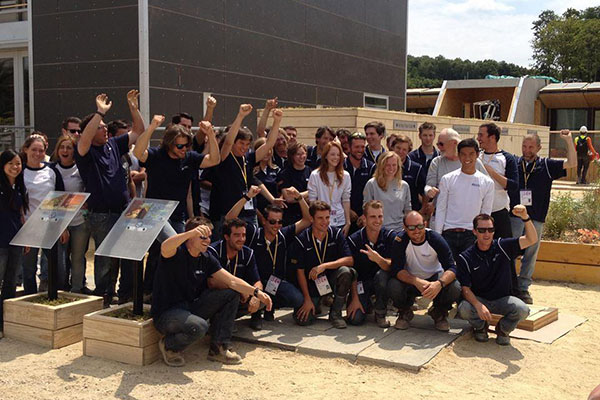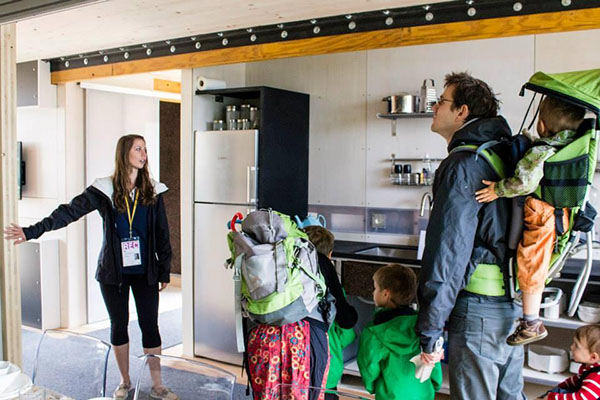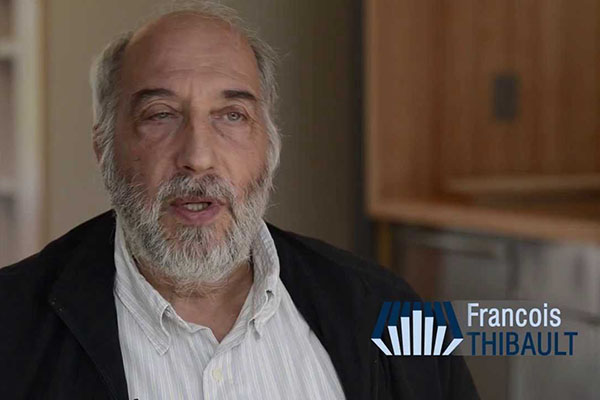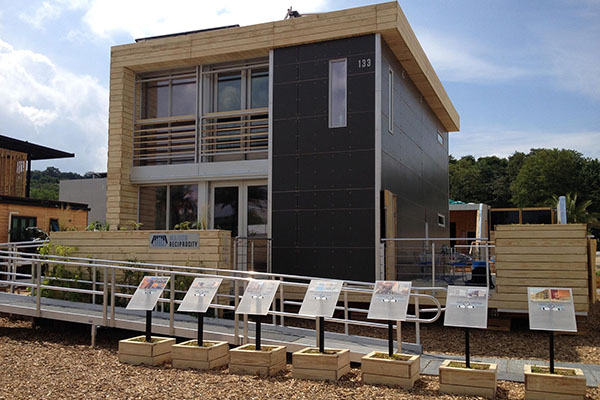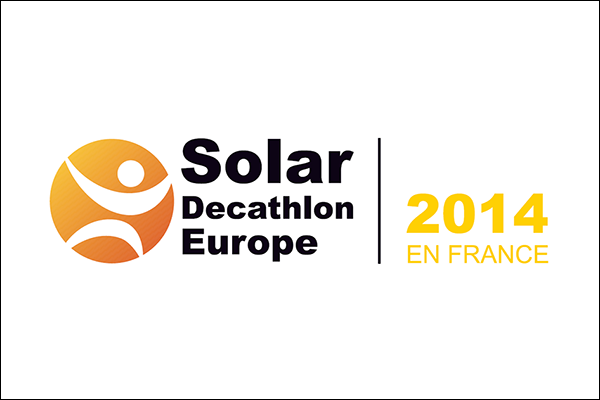Team Réciprocité speaks about their team's goals and technologies for their Solar Decathlon Europe 2014 entry, Maison Reciprocity.
Transcript
On-screen graphic: Solar Decathlon Europe 2014 in France
Narrator: Maison Reciprocity is Team Reciprocity’s entry in Solar Decathlon Europe 2014. Appalachian State University and Université d’Angers partnered together to design and build a cost effective, energy efficient and attractive solar-powered house. It’s our contribution to making a more sustainable tomorrow.
Jamie Russell, faculty advisor: This is a fairly daunting thing, but it is a great honor to be representing not just only Appalachian State University in Watauga County and North Carolina, but really representing the whole country. The area of excellence for Appalachian State is internationalism, becoming well-versed and aware of what’s happening in a global society. The theme, they say, is a world of opportunities for Appalachian students.
Daphne Carriére, Université d’Angers student: For me, it’s first representing our country and our future. It’s another way to think and another way to work and for me to bring that in France to make them improve and change their mind and organize new way to work with new technology.
Francois Thibault, faculty advisor: I think it’s an opportunity to work with a different country to improve their knowledge of different paths. For them, it’s certainly the first time they can realize something very (not understandable).
Mark Bridges, communications manager: Team Reciprocity is a continuation and a highlight of a 30-year partnership in international culture between Appalachian and Angers consisting of students across a variety of competencies coming together in the pursuit of a common goal, and that goal being not only to design and build a house to win this competition but a journey and vision that is Maison Reciprocity.
Scott Hopkins, construction manager: We’re using construction systems that no one on this team is familiar with. They’re not very prominent here in North America, they’re European technologies, so we have a steep learning curve to overcome. But aside from that I think we have a good team in place to address those challenges.
Michael Germano, project architect: The reimagined row house is taking the established row-house theme you can see in most urban centers such as New York, Paris, London and it is re-envisioning it, reimaging it so that it can be adaptable not just for more affluent families but to meet the needs of everybody.
Lukas Burgher, project engineer: Traditionally, brise-soleil means shading device and that’s what we’re using it for predominantly. It can shade the home when needed but also can open up and allow sunlight or passive solar when needed. Basically, the chord is a prefabricated unit and it contains all the mechanical, electrical and plumbing systems. Basically, they can gain structure from each other so the brise-soleil can be supported by the chord structurally and the brise-soleil has the photovoltaics and solar thermal, so those energies are used by the chord to distribute to the house.
Hopkins: CLT is cross-laminated timber, and these are large wooden panels that are assembled by taking layers of wood that are joined together and stacking one layer 90 degrees perpendicular to the first layer in as many layers as you need in that fashion until you have a panel of the desired thickness to carry whatever load it is designed to carry.
I would like for CLTs to at least get a new look at being used here in North America. I think they have potential to enter some construction markets as a very viable solution.
Russell: So, it really, it provides a fun project that get can people interested and excited about doing their best work for something because it’s not just a textbook exercise, it’s real. And that goes across all disciplines.
Bryce Oakley, project manager: The fact that you get to see all these universities taking these homes and taking this technology to the next level to see what the future can be like is an incredible opportunity, and I just feel lucky to be a part of it.
Related links
- Facebook: Reciprocity 2014
- Twitter: Reciprocity 2014 - @reciprocity2014
What do you think?
Share your feedback on this story.
About the Department of Sustainable Technology and the Built Environment
One of seven departments housed in the College of Fine and Applied Arts, the Department of Sustainable Technology and the Built Environment at Appalachian State University features an integrated array of programs spanning the fields of sustainable design and technology. Its mission is to foster a strong and vibrant culture of inquiry, discovery and innovation that integrates theory with application, problem seeking with problem-solving, local issues with global perspectives and technological progress with environmental stewardship. It offers bachelor’s degrees in sustainable technology and building science, and a master’s degree in technology. Learn more at https://stbe.appstate.edu.
About Appalachian State University
As a premier public institution, Appalachian State University prepares students to lead purposeful lives. App State is one of 17 campuses in the University of North Carolina System, with a national reputation for innovative teaching and opening access to a high-quality, cost-effective education. The university enrolls more than 21,000 students, has a low student-to-faculty ratio and offers more than 150 undergraduate and 80 graduate majors at its Boone and Hickory campuses and through App State Online. Learn more at https://www.appstate.edu.
